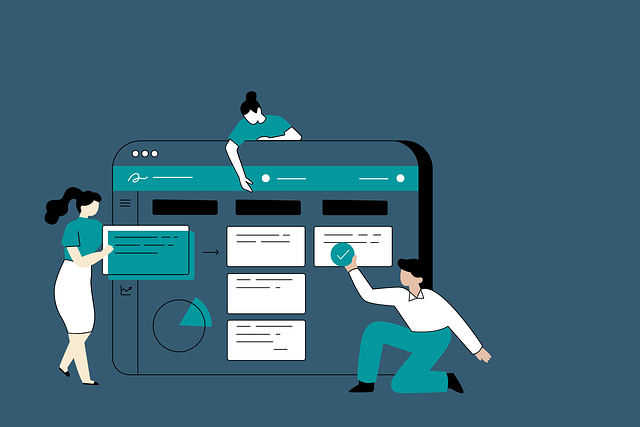Creative marketing campaigns can make a huge difference for your business. They can attract new customers, boost sales, and enhance your brand’s reputation. Let’s explore some innovative strategies that can drive remarkable results for your business.
Understanding Your Audience
The first step in crafting a creative marketing campaign is understanding your audience. You need to know who they are, what they want, and how they think. This knowledge will help you create campaigns that resonate with them.
Conducting Market Research
Market research is essential to gain insights into your audience. Use surveys, focus groups, and online analytics to gather information. Understand their demographics, preferences, and pain points. This will help you tailor your campaigns to meet their needs.
Creating Buyer Personas
Develop detailed buyer personas based on your research. These personas represent your ideal customers and include information such as age, interests, and buying behavior. They will guide your campaign strategy and ensure you target the right audience.
Diving Deeper into Audience Segmentation
For startup founders, understanding your audience goes beyond basic demographics. Audience segmentation allows you to break down your larger audience into smaller, more manageable groups. This helps you create highly targeted campaigns that speak directly to the needs and desires of each segment.
Behavioral Segmentation
Behavioral segmentation involves categorizing your audience based on their interactions with your brand. This could include their purchasing behavior, browsing habits, and engagement levels. For instance, you might have a segment of frequent buyers who respond well to loyalty programs and another segment of one-time visitors who need more convincing through retargeting campaigns.
Psychographic Segmentation
Psychographic segmentation focuses on the psychological aspects of your audience, such as their values, lifestyles, and attitudes. This type of segmentation helps you understand the motivations behind your audience’s actions. For example, if you’re marketing a fitness app, knowing that a segment of your audience values wellness and personal growth can help you craft messages that resonate with their aspirations.
Utilizing Advanced Analytics
Advanced analytics tools can provide deeper insights into your audience. Tools like Google Analytics, social media analytics, and customer relationship management (CRM) systems can track and analyze user behavior across multiple touchpoints. This data can reveal patterns and trends that help you refine your marketing strategies.
Predictive Analytics
Predictive analytics uses historical data to forecast future behavior. For startups, this means anticipating what your customers are likely to do next. By identifying trends and patterns, you can proactively address customer needs and optimize your campaigns for better results.
Engaging with Your Audience Directly
Direct engagement with your audience provides invaluable feedback and insights. Social media platforms, forums, and community events offer opportunities to interact with your customers and understand their perspectives.
Social Listening
Social listening involves monitoring social media channels for mentions of your brand, competitors, and industry keywords. This can provide real-time insights into what your audience is talking about, their sentiment towards your brand, and emerging trends. Use these insights to adjust your campaigns and address any concerns or opportunities that arise.
Conducting Customer Interviews
Customer interviews allow you to gather in-depth insights directly from your audience. Prepare a set of questions that cover various aspects of their experience with your brand. These interviews can reveal valuable information about customer pain points, preferences, and expectations.
Building a Feedback Loop
Establish a feedback loop to continuously gather insights from your audience. Encourage customers to share their thoughts through surveys, reviews, and social media interactions. Regularly review this feedback and use it to make data-driven decisions for your marketing campaigns.
Leveraging Competitor Analysis
Understanding your competitors can also provide insights into your audience. Analyze your competitors’ marketing strategies, customer engagement tactics, and overall brand positioning. Identify what works well for them and what gaps you can fill to better serve your audience.
Identifying Market Gaps
Look for gaps in the market that your competitors may have overlooked. These gaps represent opportunities to meet unfulfilled needs within your audience. For example, if your competitors are focusing on high-end products, you might find a niche in offering affordable alternatives.
Personalizing Your Approach
Personalization is key to connecting with your audience on a deeper level. Use the insights gained from your research to create personalized marketing messages that resonate with individual customers. Personalization can increase engagement and drive conversions.
Dynamic Content
Implement dynamic content on your website and in your email campaigns. Dynamic content changes based on user behavior and preferences, providing a more relevant and personalized experience. For instance, recommend products based on past purchases or show personalized greetings based on the user’s location.
Testing and Iteration
Finally, remember that understanding your audience is an ongoing process. Regularly test different approaches and iterate based on your findings.
A/B testing can help you determine what resonates best with your audience and refine your strategies for continuous improvement.
By diving deep into understanding your audience, you can create marketing campaigns that are not only creative but also highly effective.
This strategic approach ensures that your efforts are aligned with the needs and desires of your customers, driving better results for your startup.
Adapting to Market Trends

Staying ahead of market trends is essential for any business, especially for startups looking to establish themselves in competitive markets. Adapting to these trends requires a proactive approach, constant monitoring, and the ability to pivot strategies swiftly.
Strategic Monitoring of Trends
To effectively adapt to market trends, start by setting up a robust system for monitoring industry developments. Use tools like Google Alerts, social media listening platforms, and industry news aggregators to stay informed about the latest changes and trends. Subscribe to leading industry publications and follow thought leaders on platforms like LinkedIn and Twitter to get real-time updates and insights.
Data-Driven Trend Analysis
Collect and analyze data from various sources to identify emerging trends. This can include sales data, customer feedback, and market research reports.
Use analytics tools to detect patterns and shifts in customer behavior.
By understanding the data, you can make informed decisions about which trends are worth pursuing and which are likely to be fleeting.
Agile Marketing Strategies
Adapting to market trends requires an agile marketing strategy. Be prepared to adjust your campaigns and tactics based on new information and shifting market dynamics.
This flexibility allows you to capitalize on opportunities as they arise and stay ahead of competitors.
Rapid Prototyping and Testing
Implement rapid prototyping and testing of new marketing ideas. This involves creating quick, low-cost versions of your campaigns or products to test their viability in the market.
Use A/B testing to compare different versions of your marketing materials and determine what resonates best with your audience.
This approach allows you to make data-driven adjustments and scale successful ideas quickly.
Leveraging Emerging Technologies
Stay informed about new technologies that can enhance your marketing efforts.
Technologies like artificial intelligence (AI), machine learning, and augmented reality (AR) offer innovative ways to engage with your audience and improve the customer experience.
Integrating AI and Machine Learning
AI and machine learning can help you personalize marketing efforts, predict customer behavior, and optimize your campaigns in real time. Use these technologies to analyze customer data, automate routine tasks, and create personalized content that resonates with individual customers.
This not only improves efficiency but also enhances customer satisfaction and loyalty.
Adapting to Consumer Behavior Shifts
Consumer behavior is constantly evolving, influenced by cultural, economic, and technological changes. Understanding these shifts and adapting your marketing strategies accordingly is crucial for staying relevant.
Embracing Sustainability and Ethical Practices
Today’s consumers are increasingly concerned about sustainability and ethical business practices. Highlight your commitment to these values in your marketing campaigns.
Showcase your efforts to reduce your environmental footprint, use ethical sourcing, and support social causes. This can enhance your brand image and attract socially conscious consumers.
Building a Culture of Innovation
Creating a culture of innovation within your organization is key to staying ahead of market trends. Encourage your team to experiment with new ideas, take calculated risks, and learn from failures.
Fostering Creativity and Collaboration
Promote a collaborative environment where team members can share ideas and work together on innovative projects. Use brainstorming sessions, innovation workshops, and cross-functional teams to foster creativity.
Encourage open communication and provide resources for continuous learning and development.
Strategic Partnerships and Collaborations
Form strategic partnerships with other companies, startups, and industry experts to stay ahead of trends. Collaborations can provide access to new technologies, market insights, and additional resources that can enhance your marketing efforts.
Engaging with Industry Networks
Participate in industry networks, conferences, and trade shows to stay connected with the latest trends and developments. Networking with peers and industry leaders can provide valuable insights and open up opportunities for collaboration.
Proactive Customer Engagement
Engage with your customers proactively to understand their evolving needs and preferences. Use social media, surveys, and direct interactions to gather feedback and stay attuned to their expectations.
Creating Feedback Loops
Establish feedback loops to continuously collect and analyze customer feedback. This can help you identify emerging trends and areas for improvement.
Act on the feedback promptly to show customers that you value their input and are committed to meeting their needs.
Continuous Learning and Adaptation
The ability to learn and adapt quickly is crucial for staying relevant in a fast-paced market. Invest in continuous learning and development for yourself and your team to keep up with industry changes and enhance your skills.
Investing in Training and Development
Provide ongoing training and development opportunities for your team. This could include workshops, online courses, and attending industry conferences. A well-informed and skilled team is better equipped to identify and capitalize on market trends.
By strategically monitoring trends, leveraging emerging technologies, and fostering a culture of innovation, startup founders can adapt to market changes effectively. This proactive approach ensures that your marketing campaigns remain relevant, engaging, and successful in driving business results.
Emphasizing Customer Engagement

Customer engagement is crucial for the success of your marketing campaigns. Engaged customers are more likely to be loyal, make repeat purchases, and become brand advocates.
Creating a Community Around Your Brand
Building a community around your brand fosters loyalty and engagement. Encourage customers to connect with each other and with your brand through social media groups, forums, and events.
Encouraging Customer Feedback
Solicit feedback from your customers to understand their needs and preferences. Use surveys, social media polls, and direct interactions to gather insights. Act on this feedback to improve your products and services.
Implementing Loyalty Programs
Loyalty programs reward customers for their repeat business and engagement. Offer incentives such as discounts, exclusive offers, and early access to new products. A well-designed loyalty program can enhance customer retention and satisfaction.
Utilizing Gamification
Gamification involves incorporating game-like elements into your marketing strategy to boost engagement. This can make the customer experience more enjoyable and interactive.
Creating Challenges and Contests
Challenges and contests can drive excitement and participation. Encourage customers to complete tasks, share content, or engage with your brand to earn rewards. This not only increases engagement but also promotes your brand through user-generated content.
Offering Rewards and Recognition
Recognize and reward customers for their engagement and loyalty. This could include featuring them on your social media, offering special perks, or providing exclusive rewards.
Recognition can motivate customers to continue engaging with your brand.
Enhancing Customer Service
Exceptional customer service is a key component of customer engagement. Ensure that your customer service team is responsive, helpful, and friendly.
A positive customer service experience can significantly impact customer satisfaction and loyalty.
Personalizing Marketing Efforts
Personalization makes your customers feel valued and understood. Tailor your marketing efforts to individual preferences and behaviors.
Using Data to Inform Personalization
Collect and analyze customer data to inform your personalization efforts. This could include purchase history, browsing behavior, and demographic information.
Use this data to create targeted campaigns that resonate with your audience.
Implementing Dynamic Content
Dynamic content changes based on the viewer’s preferences and behavior. This can make your marketing messages more relevant and engaging. Examples include personalized email content, website recommendations, and targeted ads.
Building Long-Term Relationships
Focus on building long-term relationships with your customers rather than just making quick sales. Long-term relationships foster loyalty and encourage repeat business.
Providing Consistent Value
Consistently provide value to your customers through your products, services, and content. This can build trust and ensure that customers see your brand as a reliable and valuable resource.
Keeping Communication Open
Maintain open lines of communication with your customers. Regularly check in with them, address their concerns, and keep them informed about new products, updates, and promotions.
Exploring Creative Content Formats
Diversifying your content formats can keep your audience engaged and interested. Explore different formats to deliver your message effectively.
Blogging and Articles
Blogs and articles are excellent for sharing in-depth information and insights. Regularly update your blog with high-quality content that addresses your audience’s interests and needs.
Podcasting
Podcasts are a popular format for reaching audiences on the go. Consider starting a podcast to share industry insights, interviews, and valuable tips.
Podcasts can help establish your brand as an authority in your field.
Webinars and Live Streams
Webinars and live streams offer a platform for real-time interaction with your audience. Use these formats for educational sessions, product launches, and Q&A sessions. They provide an opportunity to engage with your audience directly and build a sense of community.
Infographics and Visual Content
Infographics and visual content can make complex information more digestible and engaging. Use visuals to complement your text content and enhance your message. Infographics, charts, and videos can capture attention and drive engagement.
Consistency in Branding
Consistency in branding is essential for building a strong and recognizable brand identity. Ensure that all your marketing materials reflect your brand’s values, voice, and visual identity.
Maintaining a Cohesive Brand Image
A cohesive brand image across all channels reinforces your brand identity. Use consistent logos, colors, and messaging in your marketing materials to create a unified brand presence.
Adapting to Feedback and Trends
Stay open to feedback and adapt to changing trends. Regularly review your branding strategy and make adjustments as needed to stay relevant and effective.
Wrapping it up
Creative marketing campaign strategies can significantly drive business results. By understanding your audience, leveraging various marketing channels, creating engaging content, and maintaining strong customer relationships, you can craft campaigns that resonate and succeed.
Stay adaptable, continuously measure your results, and always seek ways to innovate. With the right approach, your creative marketing campaigns can become powerful tools for achieving your business goals.
READ NEXT:
- Glamorous Content Ideas for Jewelry Brands on Social Media
- Romantic Social Media Ideas for Valentine’s Day
- Transform Your Marketing: Home Improvement Social Media Ideas
- Celebrate the Season: Holiday Social Media Ideas
- Using Social Media to Drive Social Action Projects





















Comments are closed.